-
1 of 253523 objects
Amber canister c.1660
Amber, silver gilt | 24.0 x 14.0 x 14.0 cm (whole object) | RCIN 45109
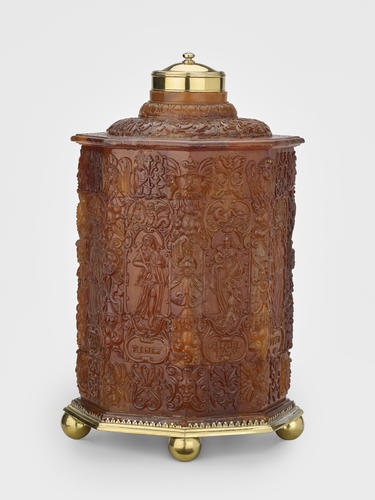
Amber canister c.1660
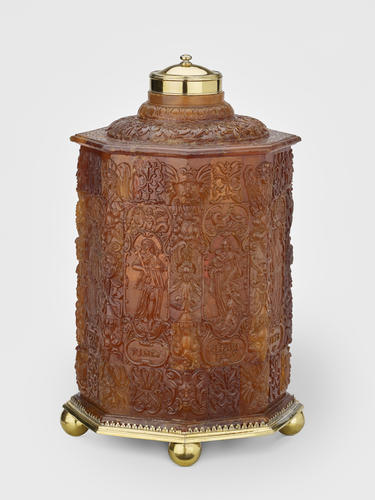
Amber canister c.1660
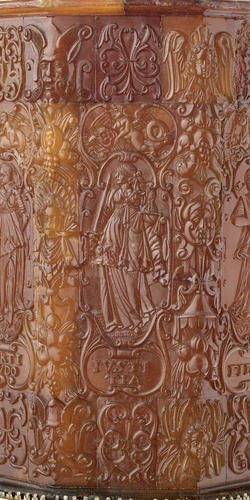
Amber canister c.1660
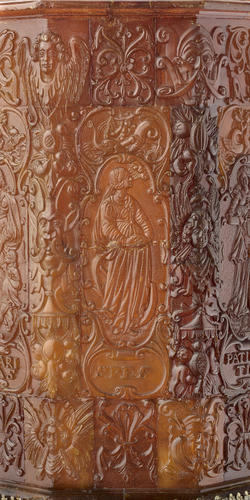
Amber canister c.1660
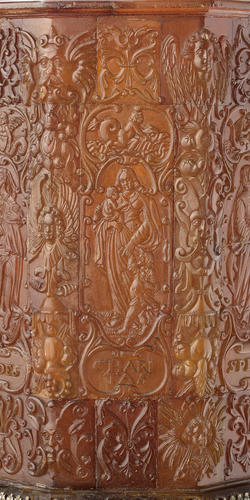
Amber canister c.1660
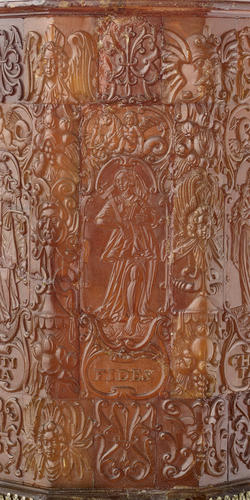
Amber canister c.1660
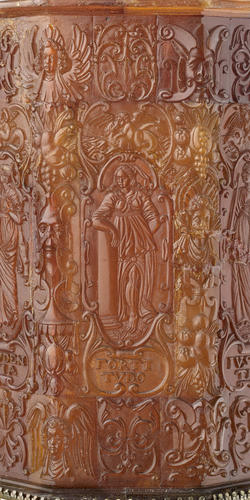
Amber canister c.1660
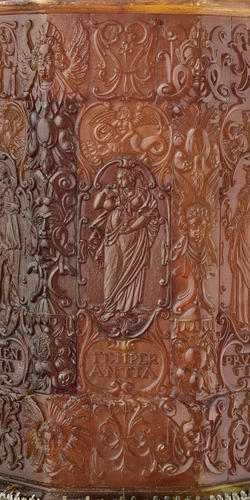
Amber canister c.1660
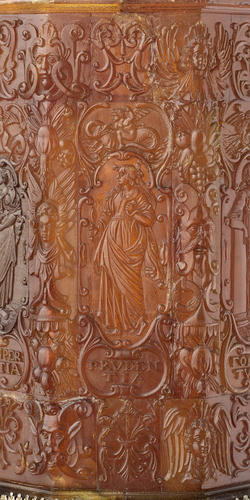
Amber canister c.1660









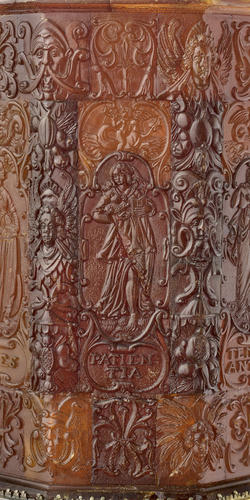
-
An octagonal amber canister with a silver-gilt screw-on-cap, resting on a moulded silver-gilt base supported by four ball feet; the canister is carved overall with foliage, grotesque masks and panels of allegorical figures representing the Virtues - Faith, Hope, Charity, Temperance, Prudence, Fortitude, Justice and Patience.
Amber occurs in large quantities along the Baltic coasts of Germany and Poland. During the seventeenth century Konigsberg and Danzig were important centres of amber carving. Many pieces were commissioned by the Brandenburg court in Berlin as diplomatic gifts; perhaps the most famous was the amber room presented to Peter the Great of Russia by Frederick the Great of Prussia.
This piece is of a type known in German as 'Schraubflaschen' (screw-top bottle), often used to hold spices. There are comparable examples in museum collections in Germany. Amber cups and tankards were particularly popular as it was believed that amber had the power to detect poisons. However, Schraubflaschen were essentially Kunstkammer display pieces and appear to have had no practical use. Amber was frequently used for the creation of Kunstkammer works, such as cups and tankards, small sculptures and altars; like mother of pearl, ivory and hardstones, it was treated as a natural wonder to be mounted in silver or gilt. Works of art created from amber were found in the Kunstkammer of the Emperor Rudolf II and Frederick II of Denmark.
The figures are found on a number of mid-seventeenth century armber tankards, although their source or sources are currently not known. They may be based on the engravings of Georges Reverdy, a print maker working in France in the second half of the 16th century, although there are variations in each case. George Schreiber of Konigsberg was responsible for some of the finest vessels; this piece was probably made by one of his followers around 1660.
Unmarked.Provenance
Early provenance unknown. The canister is first recorded in the Royal Collection in 1854, when it was placed on loan to the South Kensington Museum. In 1862 it again featured among loans of medieval and Renaissance works of art displayed at the museum.
In 1887 the canister was returned to the Royal Collection. It seems to have undergone some conservation work in the early twentieth century at the hand of HJ Hatfield & Sons, who undertook various restoration projects for the royal family. A label coinciding with this work in 1903 suggests it was at this date in a sitting room on the East Front (now the State Visitors' Sitting Room) of Buckingham Palace. -
Medium and techniques
Amber, silver gilt
Measurements
24.0 x 14.0 x 14.0 cm (whole object)
655.3 g (Weight) (whole object)
Category
Object type(s)